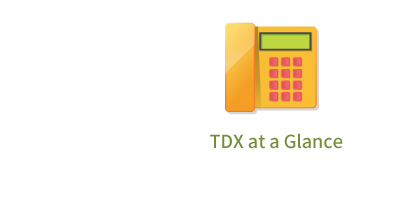
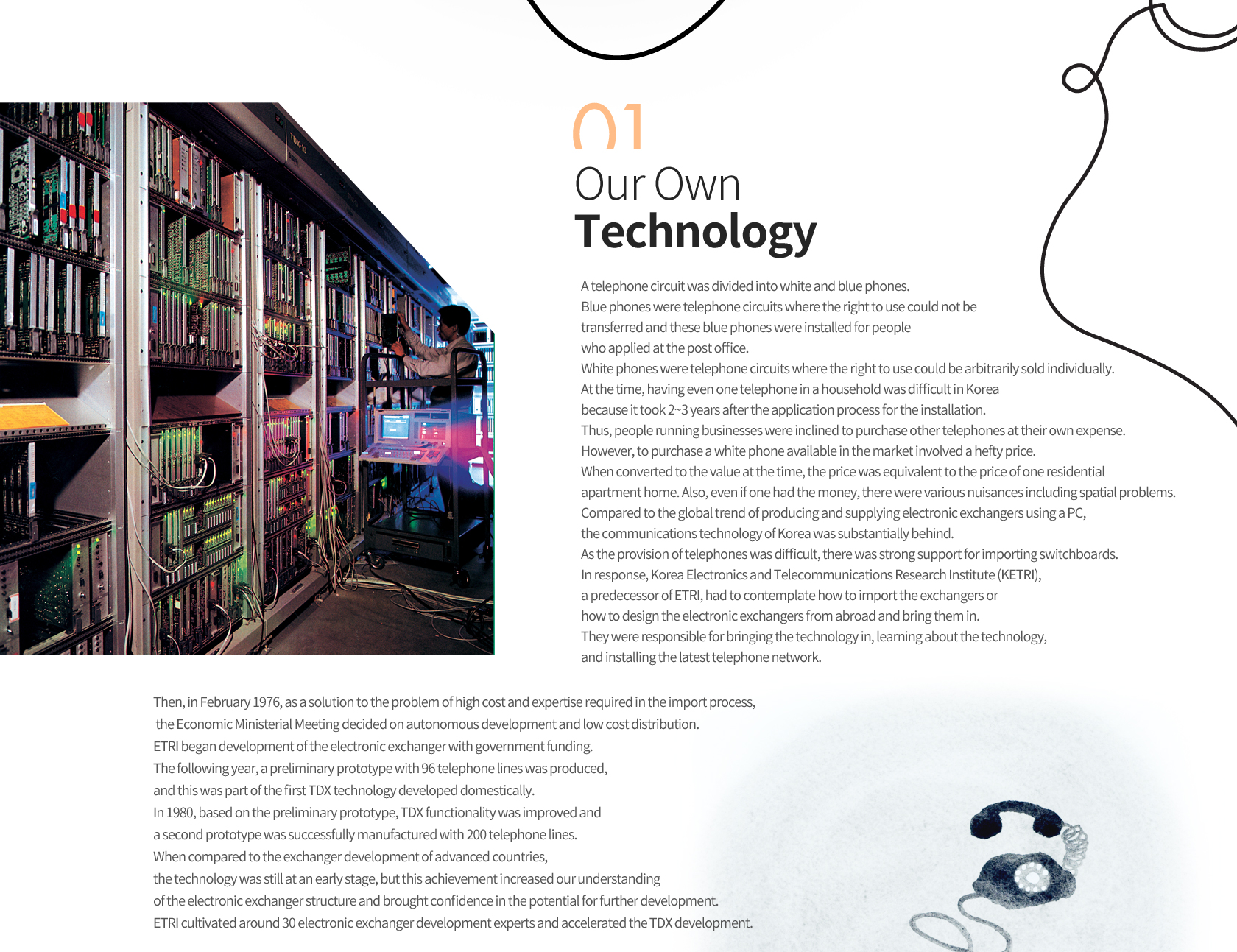
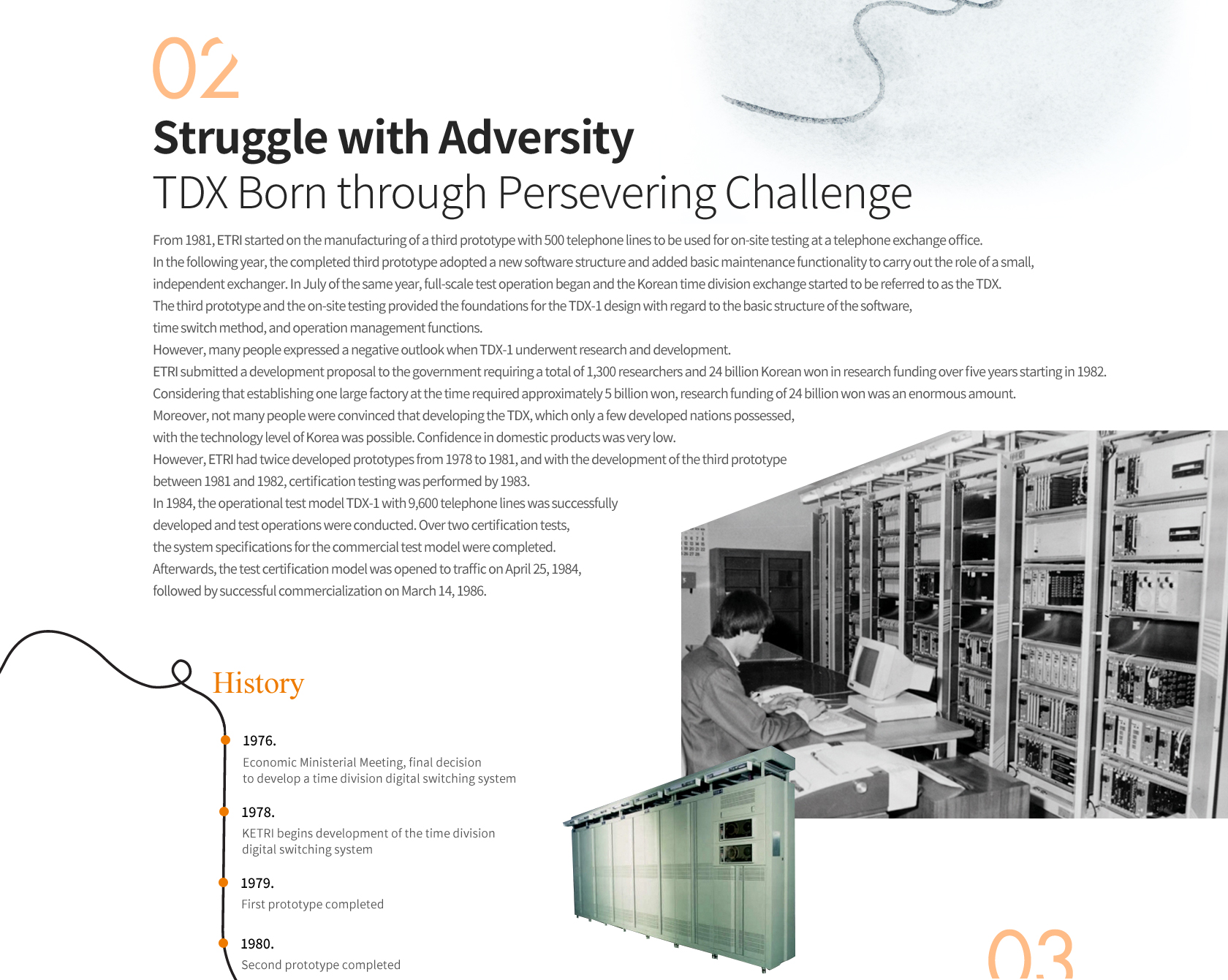
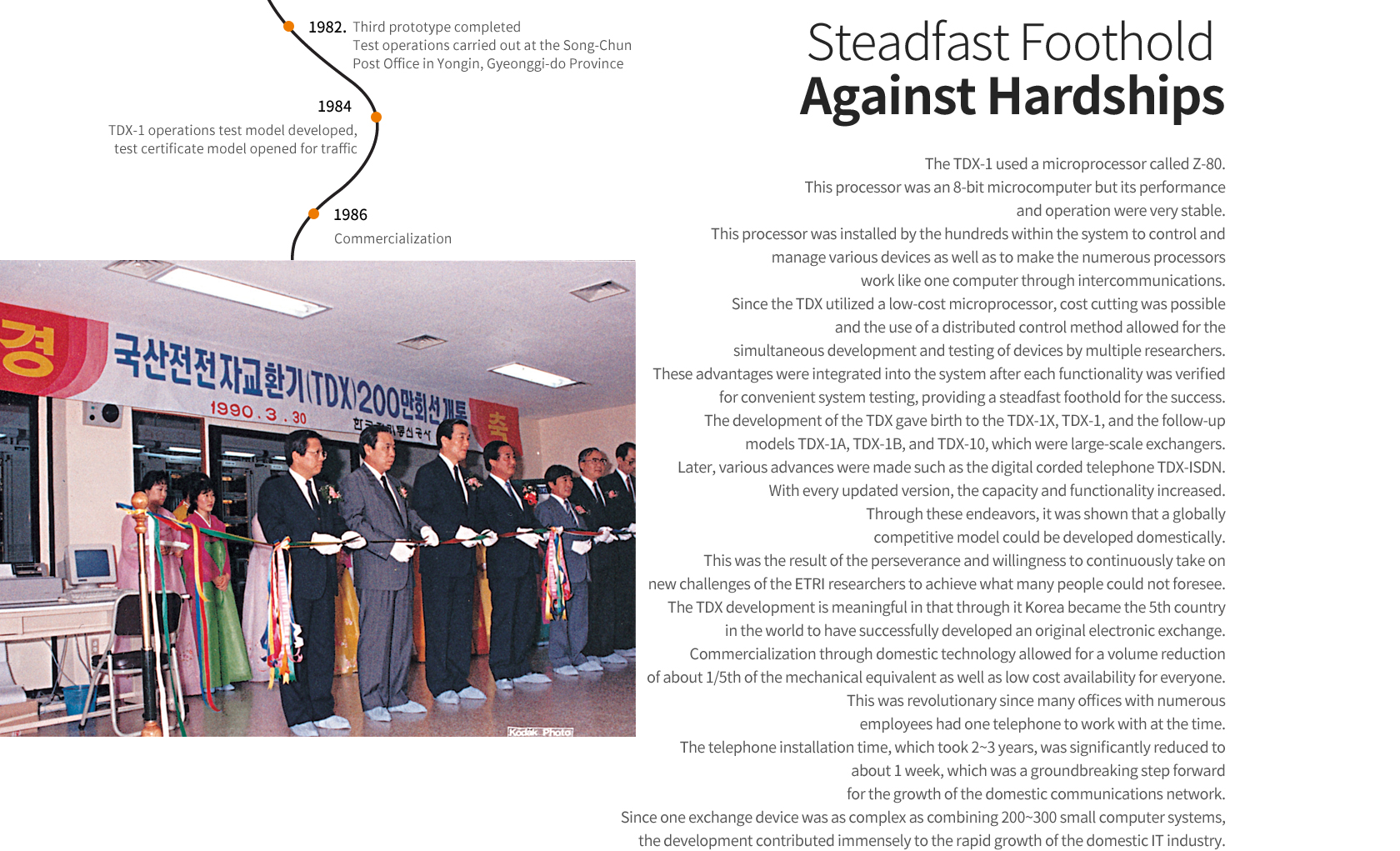
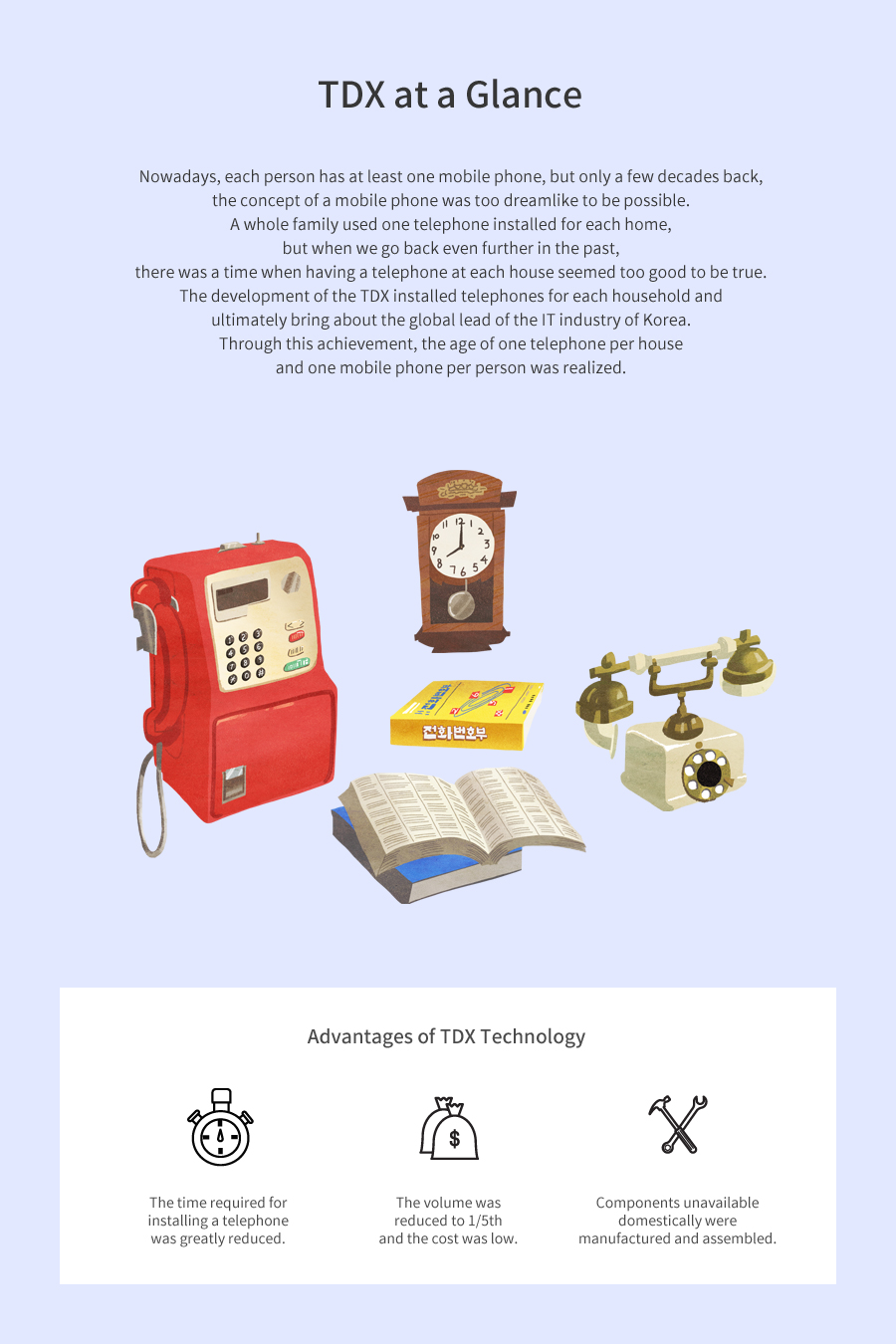
Leap Forward for
Future Information Communications
First Domestic Switchboard TDX
TDX, short for Time Division Exchange, refers to the time division digital switching system, which is a digitized control system and speech path subsystem . Compared to space division switching, the time division digital switching system provided an economic alternative and outstanding call quality.
01
Our Own
Technology
A telephone circuit was divided into white and blue phones. Blue phones were telephone circuits where the right to use could not be transferred and these blue phones were installed for people who applied at the post office. White phones were telephone circuits where the right to use could be arbitrarily sold individually. At the time, having even one telephone in a household was difficult in Korea because it took 2~3 years after the application process for the installation. Thus, people running businesses were inclined to purchase other telephones at their own expense. However, to purchase a white phone available in the market involved a hefty price. When converted to the value at the time, the price was equivalent to the price of one residential apartment home. Also, even if one had the money, there were various nuisances including spatial problems. Compared to the global trend of producing and supplying electronic exchangers using a PC, the communications technology of Korea was substantially behind.
As the provision of telephones was difficult, there was strong support for importing switchboards. In response, Korea Electronics and Telecommunications Research Institute (KETRI), a predecessor of ETRI, had to contemplate how to import the exchangers or how to design the electronic exchangers from abroad and bring them in. They were responsible for bringing the technology in, learning about the technology, and installing the latest telephone network.
Then, in February 1976, as a solution to the problem of high cost and expertise required in the import process, the Economic Ministerial Meeting decided on autonomous development and low cost distribution. ETRI began development of the electronic exchanger with government funding. The following year, a preliminary prototype with 96 telephone lines was produced, and this was part of the first TDX technology developed domestically.
In 1980, based on the preliminary prototype, TDX functionality was improved and a second prototype was successfully manufactured with 200 telephone lines. When compared to the exchanger development of advanced countries, the technology was still at an early stage, but this achievement increased our understanding of the electronic exchanger structure and brought confidence in the potential for further development. ETRI cultivated around 30 electronic exchanger development experts and accelerated the TDX development.
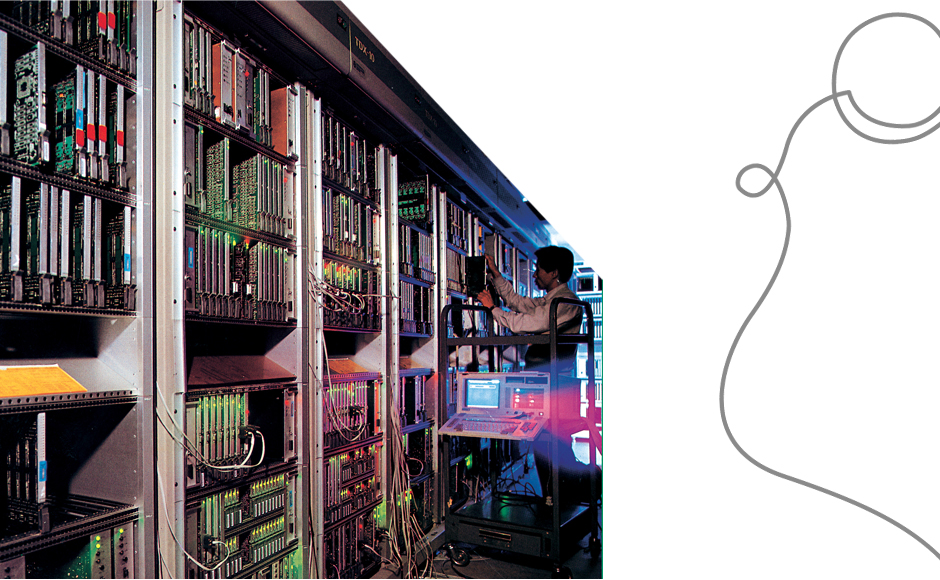
02
Struggle with Adversity
TDX Born through Persevering Challenge
From 1981, ETRI started on the manufacturing of a third prototype with 500 telephone lines to be used for on-site testing at a telephone exchange office. In the following year, the completed third prototype adopted a new software structure and added basic maintenance functionality to carry out the role of a small, independent exchanger. In July of the same year, full-scale test operation began and the Korean time division exchange started to be referred to as the TDX. The third prototype and the on-site testing provided the foundations for the TDX-1 design with regard to the basic structure of the software, time switch method, and operation management functions.
However, many people expressed a negative outlook when TDX-1 underwent research and development. ETRI submitted a development proposal to the government requiring a total of 1,300 researchers and 24 billion Korean won in research funding over five years starting in 1982. Considering that establishing one large factory at the time required approximately 5 billion won, research funding of 24 billion won was an enormous amount. Moreover, not many people were convinced that developing the TDX, which only a few developed nations possessed, with the technology level of Korea was possible. Confidence in domestic products was very low.
However, ETRI had twice developed prototypes from 1978 to 1981, and with the development of the third prototype between 1981 and 1982, certification testing was performed by 1983. In 1984, the operational test model TDX-1 with 9,600 telephone lines was successfully developed and test operations were conducted. Over two certification tests, the system specifications for the commercial test model were completed. Afterwards, the test certification model was opened to traffic on April 25, 1984, followed by successful commercialization on March 14, 1986.
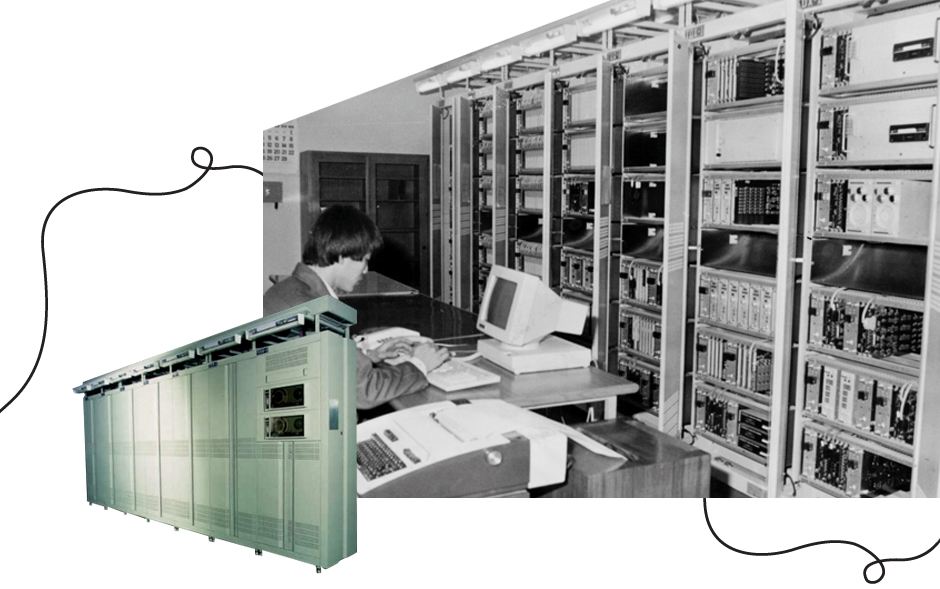
03
Steadfast Foothold
Against Hardships
The TDX-1 used a microprocessor called Z-80. This processor was an 8-bit microcomputer but its performance and operation were very stable. This processor was installed by the hundreds within the system to control and manage various devices as well as to make the numerous processors work like one computer through intercommunications. Since the TDX utilized a low-cost microprocessor, cost cutting was possible and the use of a distributed control method allowed for the simultaneous development and testing of devices by multiple researchers. These advantages were integrated into the system after each functionality was verified for convenient system testing, providing a steadfast foothold for the success.
The development of the TDX gave birth to the TDX-1X, TDX-1, and the follow-up models TDX-1A, TDX-1B, and TDX-10, which were large-scale exchangers. Later, various advances were made such as the digital corded telephone TDX-ISDN. With every updated version, the capacity and functionality increased. Through these endeavors, it was shown that a globally competitive model could be developed domestically. This was the result of the perseverance and willingness to continuously take on new challenges of the ETRI researchers to achieve what many people could not foresee.
The TDX development is meaningful in that through it Korea became the 5th country in the world to have successfully developed an original electronic exchange. Commercialization through domestic technology allowed for a volume reduction of about 1/5th of the mechanical equivalent as well as low cost availability for everyone. This was revolutionary since many offices with numerous employees had one telephone to work with at the time. The telephone installation time, which took 2~3 years, was significantly reduced to about 1 week, which was a groundbreaking step forward for the growth of the domestic communications network. Since one exchange device was as complex as combining 200~300 small computer systems, the development contributed immensely to the rapid growth of the domestic IT industry.
The TDX development allowed for the advancement of technologies including the development of software involving hundreds of lines of code and the assembly and production of components unavailable domestically at the time. These technologies were not meant to make the present better than the past but they were far-sighted technologies for the country to establish itself as a future communications powerhouse. Attempting to do what others thought impossible is not the wrong answer, but giving up without trying is. The passion and dedication that the ETRI researchers showed through their unceasing and tireless work provided a sturdy foundation for the Korean electronics industry to stand proudly among developed nations.
- 1976.
- Economic Ministerial Meeting, final decision to develop a time division digital switching system
- 1978.
- KETRI begins development of the time division digital switching system
- 1979.
- First prototype completed
- 1980.
- Second prototype completed
- 1982.
- Third prototype completed
Test operations carried out at the Song-Chun Post Office in Yongin, Gyeonggi-do Province - 1984.
- TDX-1 operations test model developed, test certificate model opened for traffic
- 1986.
- Commercialization







